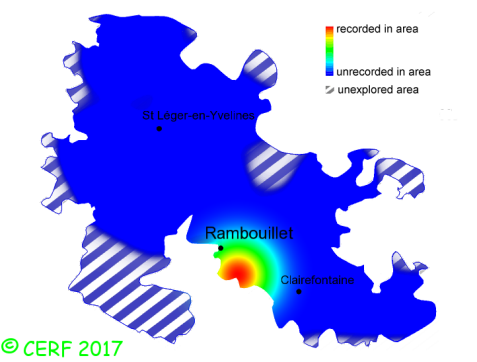|
Pisolithus arrhizus (Scop.:Fr.) Rausch.
|
common name(s) : Dyeball
New classification: Basidiomycota/Agaricomycotina/Agaricomycetes/Agaricomycetidae/Boletales/Sclerodermataceae
Former classification: Basidiomycota/Homobasidiomycetes/Gasteromycetideae/Sclerodermatales/Pisolitaceae
synonyms: Pisolithus arenarius, Pisolithus tinctorius
(unconfirmed synonyms: Pisolithus arhizus)
edibility : inedible
|
|
|
The fruiting body is variable in shapes, resembling horse dung, half buried, with a thin skin, ochre to beige-brown, with a short and buried stem.
The fertile surface is.
The spore print is dark red-brown.
It grows on the ground, in pine woods (more often in the Mediterranean area), in meadows, on sandy ground, on a rather acid soil, with pine.
The fruiting period takes place from July to December.
| Dimensions: |
width of fruiting body approximately 8 cm (between 5 and 12 cm) |
| | total height approximately 14 cm (between 5 and 25 cm) |
Distinctive features : sorry, no English description yet
Pisolithus arrhizus is rare and confined in the forest of Rambouillet, and is quite rare, more generally speaking
.
|  | | Above : distribution map of Pisolithus arrhizus in the forest of Rambouillet |
|
page updated on 14/01/18